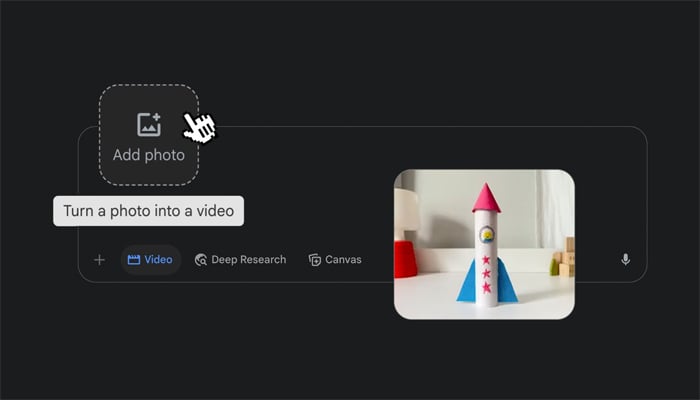
Google has unveiled its latest video generation model, Veo 3, and is now expanding access to subscribers of Google AI Pro in more than 150 countries, including Pakistan.
Alphabet-owned tech giant revealed on July 11, 2025, that this new capability allows users to transform their favourite photos into vivid eight-second video clips with sound through a powerful photo-to-video feature built on Veo 3, launched earlier this year.
Notably, users have already created over 40 million Veo 3 videos in just seven weeks globally — reimagining fairy tales, experimenting with ASMR, and pushing the boundaries of creativity.
How to use Veo 3 and Flow AI tools?
- To turn photos into videos, select “Videos” from the tool menu in the prompt box and upload a photo.
- Then, describe the scene and any audio instructions, and watch as the image transforms into a dynamic video.
Google stated that this tool lets users animate everything from personal moments to creative sketches and it is available to Google AI Pro and Ultra subscribers in select countries.
Simply upload a photo, describe the scene and any audio cues, and Gemini will generate a dynamic video to download or share.
These capabilities are also available in Flow, Google’s AI filmmaking tool. Users can also explore these features in Flow, Google’s AI tool for filmmakers, which now allows adding speech to video clips alongside sound effects and background audio.
Frames to Video — which allows personal images to become the starting point of dynamic clips — is also available on Veo 3 Fast, assisting users to get even more from their credits.
Flow and Google AI Ultra are now available in over 140+ countries, expanding access to these cutting-edge creative tools.
All videos generated with Gemini include a visible watermark and an invisible SynthID digital marker to indicate they are AI-created.
Moreover, Google conducts extensive “red teaming” exercises to proactively test its systems, identify and address potential issues before they arise, and carries out thorough evaluations to understand how these tools might be used and how misuse can be prevented.
















